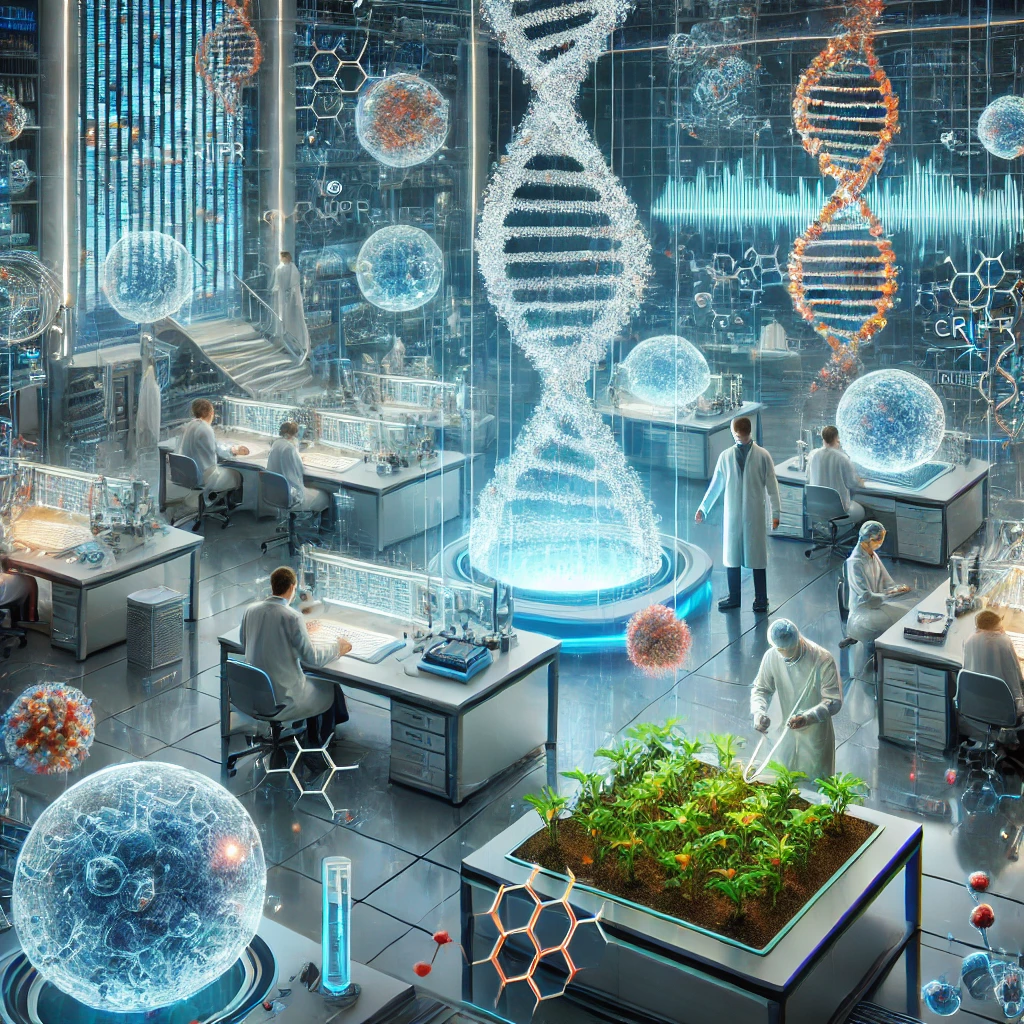What is Biotechnology?
Biotechnology uses living things like bacteria, plants, and animals to make helpful products and technologies. Scientists create new medicines, boost crops, and tackle environmental problems by tapping into these organisms’ abilities.
What is Genetic Engineering?
Genetic Engineering is a part of biotechnology that changes an organism’s DNA. This method lets scientists add, take out, or tweak genes to give organisms new traits. It’s similar to changing a recipe to get a different result from a dish.
How Does Biotechnology Work?
Biotechnology solves problems or makes new products using biological systems. Some common approaches include:
- Microorganisms: Scientists use bacteria and yeast to make medicines, enzymes, or biofuels.
- Plants and Animals: Researchers change crops to fight pests better or boost livestock output.
- Cell Cultures: Labs grow cells to create vaccines or hormones.
Main Methods in Gene Editing
- CRISPR-Cas9
- Overview: A method that lets researchers cut and change DNA at exact spots. It offers a way to tweak genetic data with great accuracy.
- Uses: To treat inherited diseases, to make crops better, to study genes.
- Gene Cloning
- Overview: Creating duplicates of certain genes. This helps experts examine how genes work and apply them in different ways.
- Uses: To make proteins for drugs, to explore gene roles.
- Transgenic Organisms
- Overview: Living things that have fresh genes put into their DNA. These creatures show new features not seen in their natural kind.
- Uses: Developing crops that fight off pests or make medicines.
Applications of Biotechnology and Genetic Engineering
- Medicine
- Drug Production: Engineered microorganisms help make medicines like insulin or antibiotics.
- Gene Therapy: Doctors fix or swap out faulty genes to treat genetic illnesses.
- Vaccines: Biotech methods lead to new vaccines that shield against diseases.
- Agriculture
- Genetically Modified Crops: Scientists tweak crops to fight off pests, diseases, or tough weather.
- Biofortification: Genetic changes boost the nutrients in crops.
- Animal Breeding: Farmers produce livestock that grow faster or have other useful traits.
- Environmental Protection
- Bioremediation: Living things clean up pollutants and toxins from our surroundings.
- Biofuels: Making renewable energy from biological materials to cut down on fossil fuel use.
- Industrial Uses
- Enzyme Production: Making enzymes for different industries such as cleaning products and food processing.
- Biopolymers: Creating biodegradable materials from biological sources.
Benefits of Biotechnology and Genetic Engineering
- Better Health: Progress in medicine and gene therapy can result in more effective treatments and cures for illnesses.
- Enhanced Food Security: Altered crops can boost food production and improve nutritional value.
- Environmental Solutions: Biotechnology can help to cut down pollution and create sustainable energy sources.
Challenges and Ethical Considerations
- Safety: Making sure that modified organisms (GMOs) don’t harm humans or the environment.
- Ethics: Tackling the moral questions about genetic changes, like how they might affect biodiversity.
- Regulation: Dealing with the complex rules that control how we use biotechnology and genetic engineering.
Looking Ahead: The Future of Biotechnology and Genetic Engineering
Biotechnology and genetic engineering have a promising future ahead. These fields could lead to breakthroughs in disease treatment fresh ideas in farming, and eco-friendly practices. Yet, we need to think hard about safety, ethics, and rules to get the most out of these advances and tackle any issues that might come up
